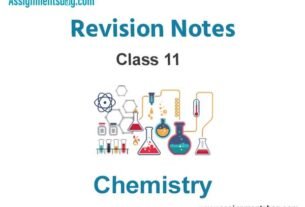Please refer to the Fundamentals of Anatomy and Physiology Revision Notes given below. These revision notes have been designed as per the latest NCERT, CBSE and KVS books issued for the current academic year. Students will be able to understand the entire chapter in your class 11th Physical Education book. We have provided chapter wise Notes for Class 11 Physical Education as per the latest examination pattern.
Revision Notes Chapter 12 Fundamentals of Anatomy and Physiology
Students of Class 11 Physical Education will be able to revise the entire chapter and also learn all important concepts based on the topic wise notes given below. Our best teachers for Grade 11 have prepared these to help you get better marks in upcoming examinations. These revision notes cover all important topics given in this chapter.
INTRODUCTION ANATOMY: Anatomy is the study of the structure of human body.
PHYSIOLOGY: Physiology is the study of functions of human body.
MAIN SYSTEMS OF HUMAN BODY
• Skeletal System
• Muscular System
• Digestive System
• Respiratory System
• Nervous System
• Glandular System
• Excretory system
• Reproductive System
IMPORTANCE OF ANATOMY AND PHYSIOLOGY
• Helps in physical fitness.
• Provides knowledge about body structure.
• Helps in selection of games.
• Protects from sports injuries.
• Helps in the process of rehabilitation.
• Helps in maintaining healthy body.
• Helps to know about individual differences.
SKELETAL SYSTEM AND ITS FUNCTIONS
SKELETAL SYSTEM: The skeletal system is the bony framework of our body.
FUNCTIONS OF SKELETAL SYSTEM
• It provides support to the body.
• It gives shape and structure to the body.
• It provides protection to the vital organs of the body.
• It acts as lever.
• It acts as storehouse of minerals.
• It acts as production house of RBC.
• It acts as junction or attachment to skeletal muscle.
• It works as self repair system.
CLASSIFICATION OF BONES
• Long bones
• Short bones
• Flat bones
• Sesamoid bones
• Irregular bones
• Sutural bones
TYPES OF JOINTS
• Immovable or fibrous joints
• Slightly movable or cartilaginous joints
• Freely movable or synovial joints
a. Hinge joint
b. Pivot joint
c. Ball and socket joint
d. Saddle joint
e. Gliding joint
MUSCULAR SYSTEM
PROPERTIES OF MUSCLE
• Muscles are the moving force behind our movements.
• Muscles are attached to the bones of the skeleton.
• Muscles give rounded shape to the body.
• Muscles help in the protection of organs with the bones.
• Human body contains more than 650 individual muscles.
• The muscles contribute about 40% of our body weight.
TYPES OF MUSCLES
• Voluntary/skeletal/striated muscle
• Involuntary or smooth or spindle muscle
• Cardiac muscle
FUNCTION OF MUSCLE
• Gives shape and structure to the body.
• Provides protection to the body.
• Helps in fluid movement
• Provides effort (of lever)
STRUCTURE OF MUSCLE: A muscle fibre is made up of myofibrils. Each myofibril consists of protein molecules called actin and myosin.
RESPIRATORY SYSTEM
RESPIRATION: Respiration is a physical process by which living organism take in oxygen from the surrounding and give out carbon dioxide.
FUNCTIONS OF RESPIRATORY SYSTEM
• To exchange oxygen and carbon dioxide between the air and blood.
• To produce sound.
• To regulate blood PH.
• To protect against some micro organism.
TYPES OF RESPIRATION
• External respiration
• Internal respiration
MECHANISM OF RESPIRATION: It involves nose, nostrils, lungs, blood and cell through which oxygen and carbon dioxide are exchanged and energy is produced in the body.
CIRCULATORY SYSTEM: The transport of material between various parts of body is called circulatory system. It consists of heart, blood vessels, arteries, arterioles, capillaries, veins,
venules and fluid.
STRUCTURE OF HEART: Heart is fist shaped. It consists of four chambers which collect impure/deoxygenated blood from different parts of body and after purification/oxygenation
it sup- plies pure/oxygenated blood to different parts of body through blood vessels.
BLOOD: Blood is a special kind of fluid which acts as a medium of transporting nutrients and gases from one part of body to another.
HEART RATE: It is the number of pumping of heart in one minute.
STROKE VOLUME: It is the volume of blood pumped out by heart in one beat. It is approximately 80 ml/beat in normal adult, whereas trained players have 110 ml/beat as
stroke volume.
CARDIAC OUTPUT: Cardiac Output = stroke volume x heart rate. It is 5 to 6 liters at basal level.
SECOND WIND: The breathlessness caused due to prolonged exercise is removed automatically by our body. It is called as second wind.
OXYGEN DEBT: The amount of oxygen taken by an athlete during the recovery period after strenuous activity is called as oxygen debt.



